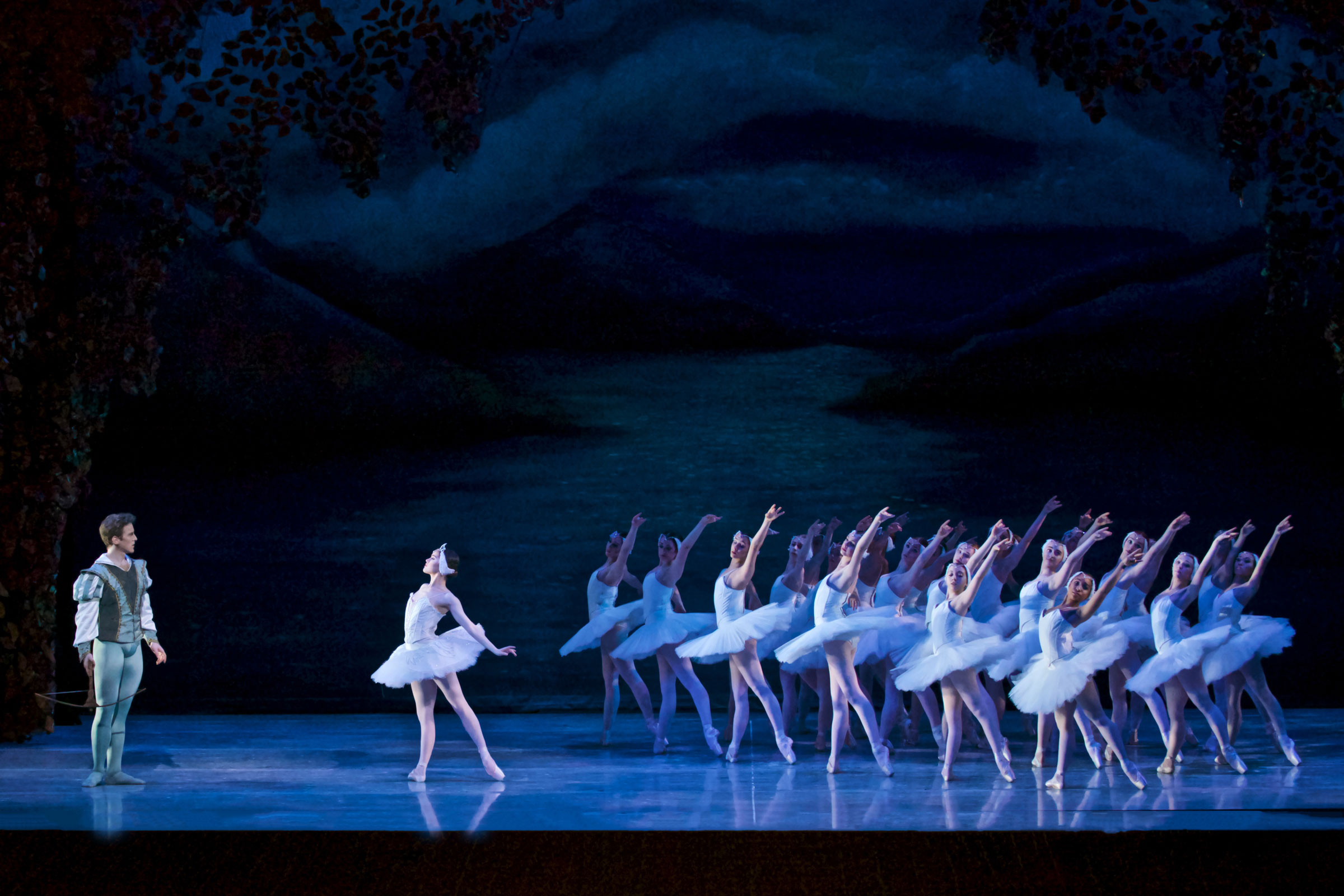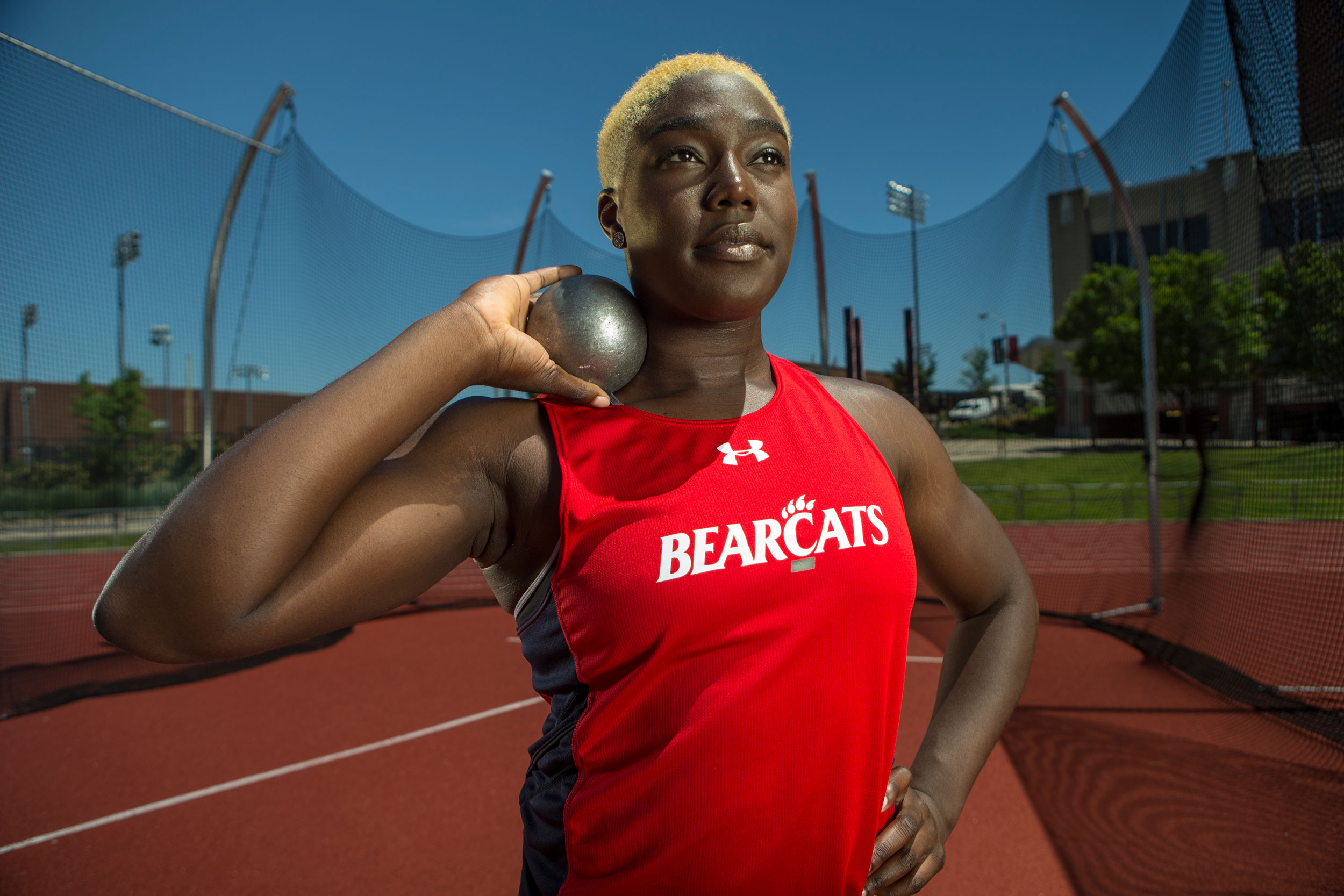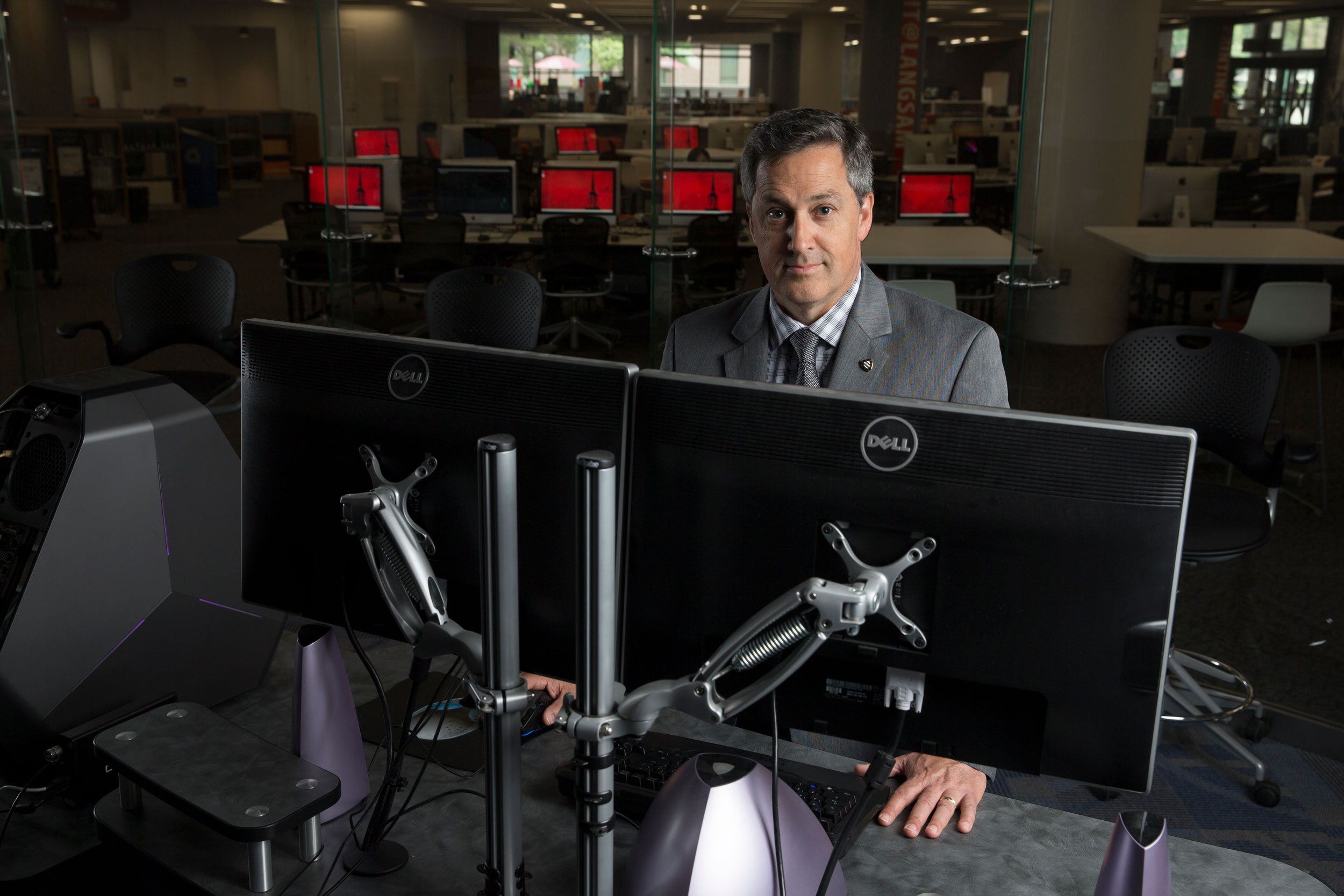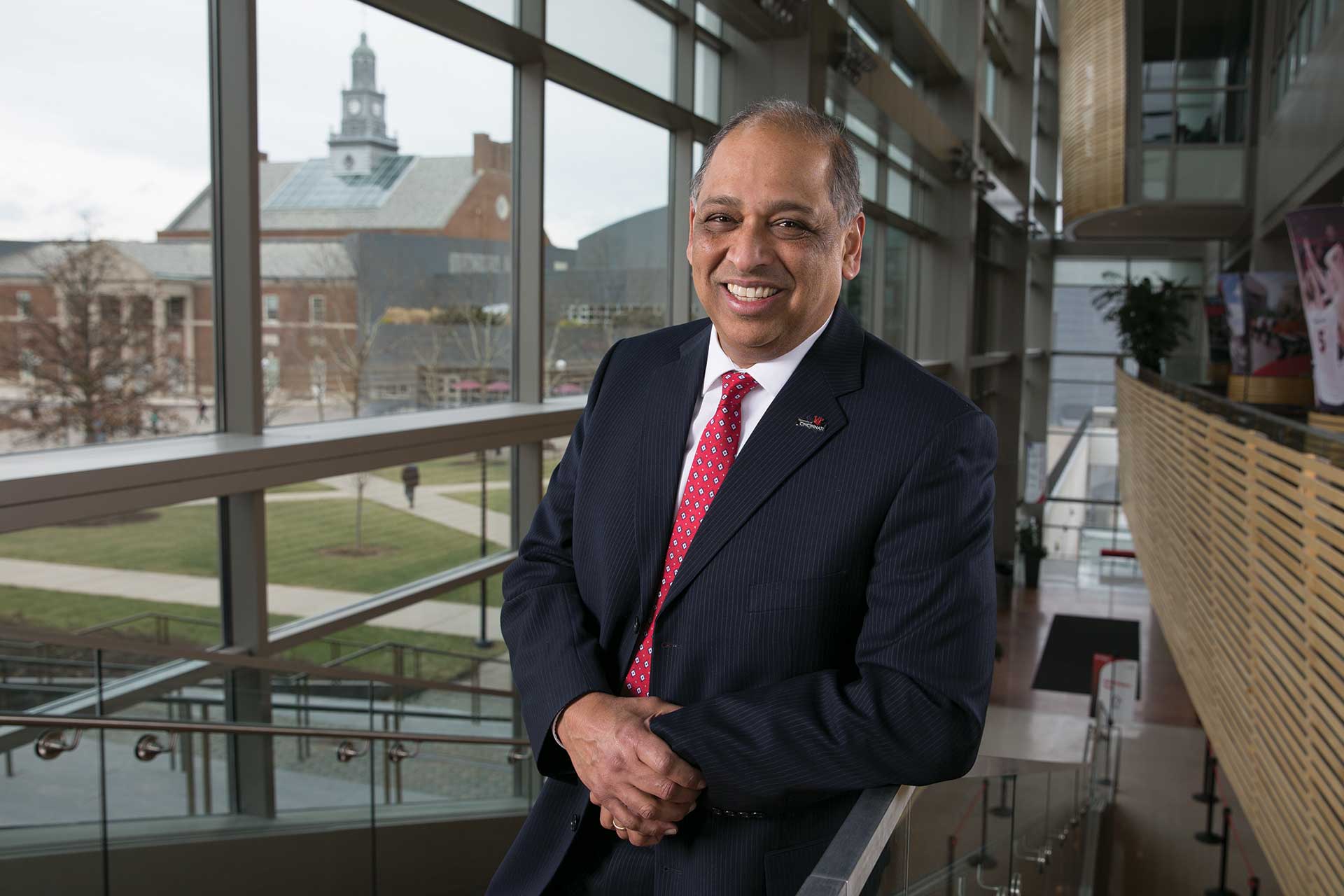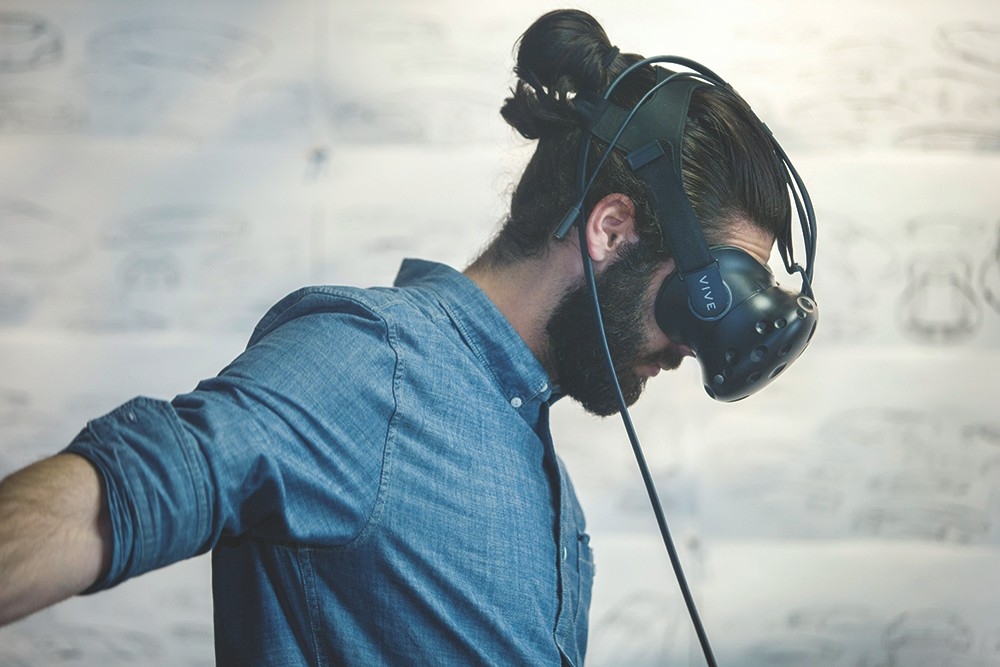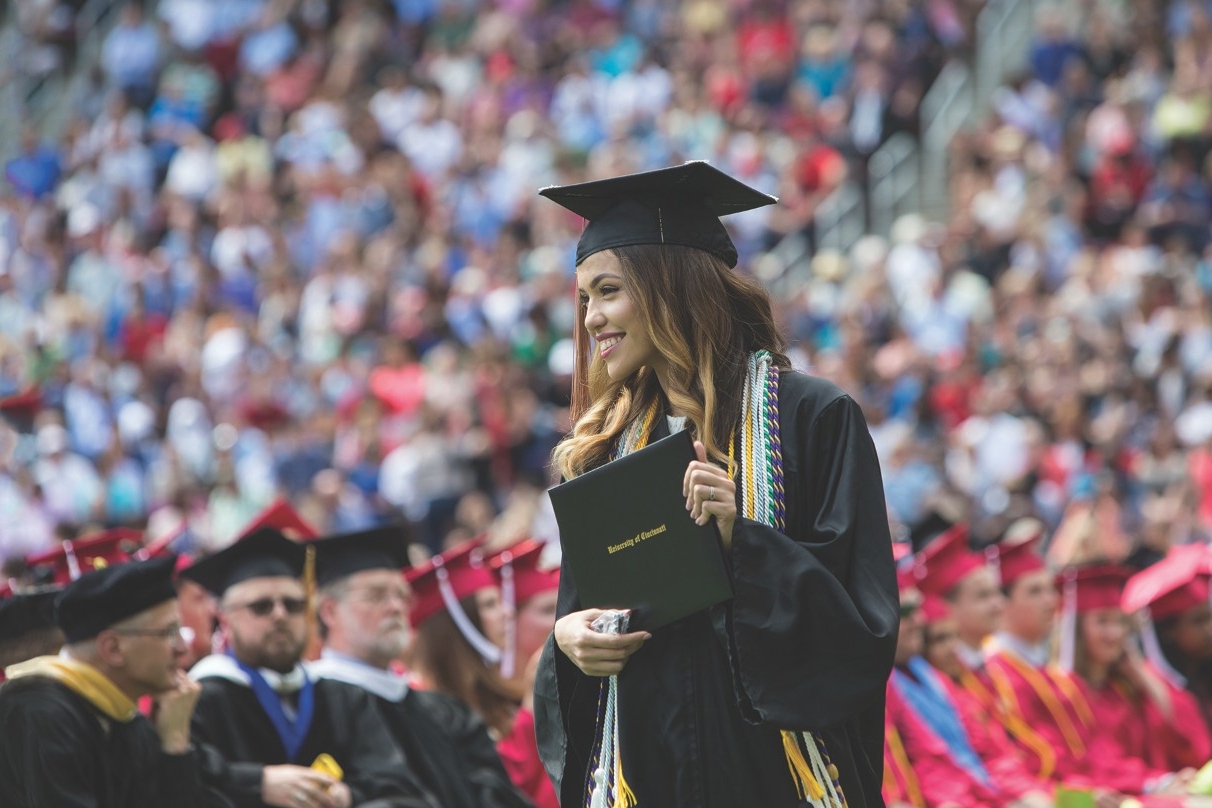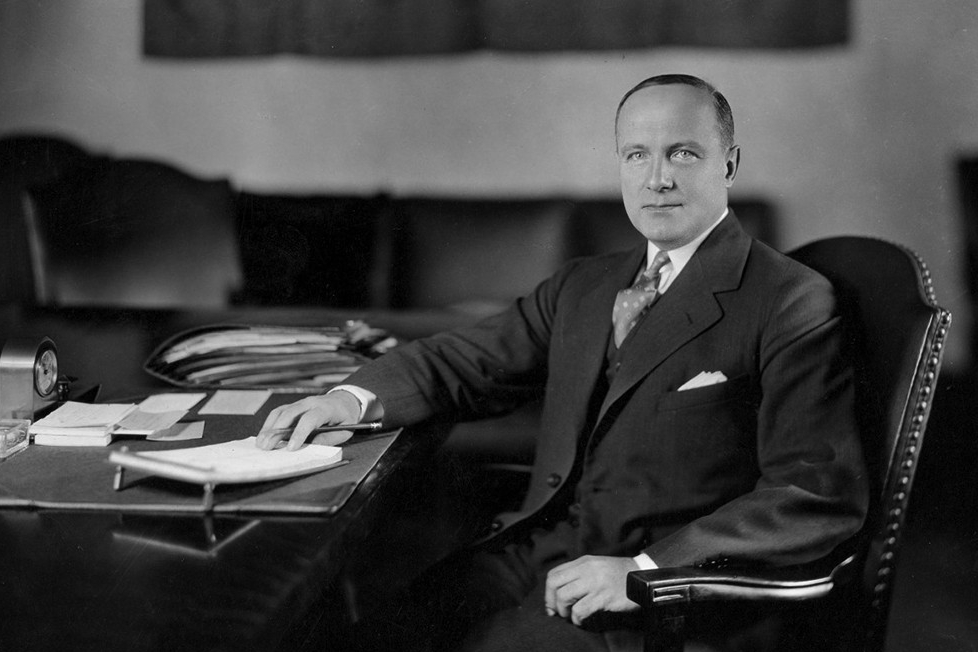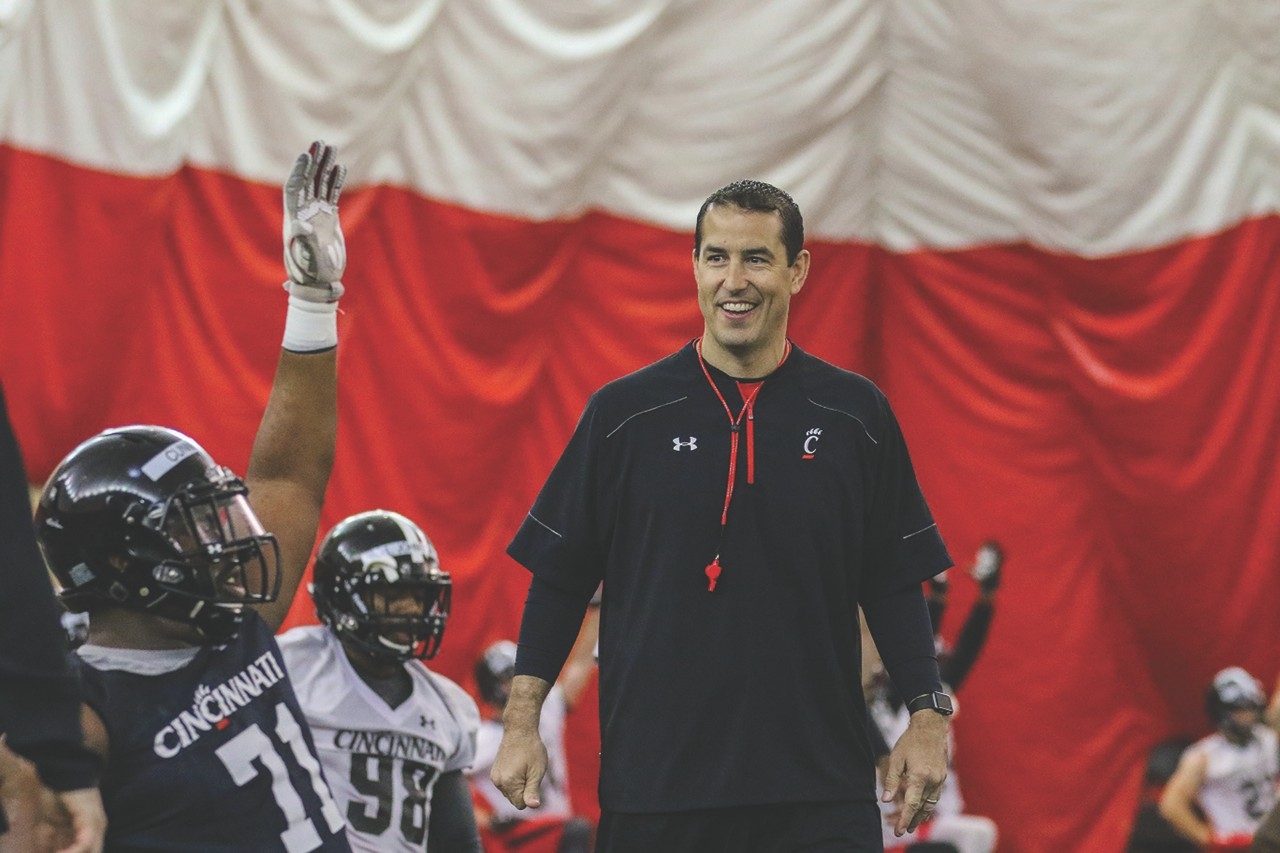’Blind Injustice’ story praised
UC Law Professor and Ohio Innocence Project Director Mark Godsey’s “Blind Injustice” will be an important book for our time — a must read for all. “Blind Injustice” (UC Magazine, March 2017) is a captivating and informative introductory “capsule.” The related front cover of the issue is exceptional.
The University of Cincinnati should confer honorary degrees upon Ricky Jackson and the other 23 exonerees of the Ohio Innocence Project for their long-suffering perseverance and major role in the righteous pursuit — and accomplishment — of truth and justice.
Fredrick J. Falls, DAAP ’70
Mansfield, Ohio


Ricky Jackson, center, moments after his exoneration in Cleveland. Jackson was featured in the story "Blind Injustice" in the March 2017 issue of UC Magazine. Photo/Jay Yocis
I read with great interest your March 2017 magazine article on “Blind Injustice.” I am familiar with UC’s Ohio Innocence Project; however, I would like you to note that it is not only that institute that attempts to free persons incarcerated who might in fact be innocent.
Many years ago, in the 1960s, when I was a partner in the firm of Cors, Scherer, Hair & Hartsock, I obtained a retrial for a prisoner named Clarence Tucker who had served many years in jail for murder, under a new Ohio postconviction remedy law which allowed retrials.
As a result of the retrial, Tucker was given freedom after his many years in jail. The entire story is the subject of a book entitled “A Bird in Your Hand,” written by Jeffrey Alan John, of the University of Dayton, and Frank L. Johnson, the son of the trial judge who originally sentenced Tucker but who had doubts about the propriety of the conviction.
Incidentally, I did not charge anything for my many, many hours involved in this case. I did it pro bono.
Irving Harris, Law ’51
Cincinnati, Ohio
Your article is the best one ever written about the OIP or me. Thank you.
Mark Godsey, Professor of Law
Ohio Innocence Project
Cincinnati, Ohio
OIP clarification
A Cincinnati attorney, William Gallagher, contacted UC Magazine regarding a clarification of the story on the Ohio Innocence Project (OIP) in the last issue.
The OIP was created as a result of the work of a group of lawyers, including Gallagher, John Cranley, current Cincinnati mayor and the OIP’s first executive director, and UC College of Law Professor Jack Chin. In the fall of 2002, the group sponsored meetings and fundraising events — inviting local judges, members of the local bar association and representatives from local law colleges to “increase our chances” of successfully getting the project started.
One of the first significant donors was Jerry Springer, former Cincinnati mayor, anchorman and current talk show host. Springer pledged $10,000 in May 2002 before the start of a major fundraising effort later that year.
The group eyed the UC College of Law as a home base. In 2003, UC law students began to review criminal cases as part of UC’s Urban Morgan Institute for Human Rights — efforts that evolved into the OIP. The project’s place at the college was solidified in September 2004, when Lois and Richard Rosenthal donated $1 million to UC to fund an “institute for justice.”
In 2003, the UC College of Law hired Mark Godsey, current director of the OIP and author of “Blind Injustice.”
Last issue impressive

This mural of Neil Armstrong in Cincinnati is part of the local ArtWorks project, a focus of UC Magazine's March 2017 issue. Photo/J. Miles Wolf courtesy of ArtWorks
I was so impressed by your March issue of UC Magazine that I am sharing my copy with many friends and relatives.
I attended summer school at UC, taking a psychology and first-year organic chemistry course in 1954 before graduating from Smith College in 1955. My husband [Chadwick Christine, M (Ed) ’66] received his master’s in education. Our experience at UC was valuable, and I marvel at the changes since then.
The content of the articles, the writing and editing, the layout and photography are world class. The issue catches UC’s spirit today as inclusive and forward thinking.
Treon Christine
Montgomery, Ohio
Best issue ever, in every way.
Kevin Grace, MA (A&S) ’77
UC Archives and Rare Books
I just wanted to let you know how much I enjoyed the March issue of UC Magazine.
I am no magazine expert, and I have only been an employee of UC for less than two years, but as an avid reader, I can tell you that the content you selected is really engaging, the photography is beautiful, the articles are well written and the graphic design is first rate.
From UC engineers competing at SpaceX, to the spotlight on ArtWorks, to the Ohio Innocence Project, the magazine shows the positive impact UC has on so many areas of life. After reading about the UC alumnus who founded Allbirds, I even ordered a pair to try out.
My compliments to the team that is responsible for producing UC Magazine on a world-class product!
Mark Kirschner
Cincinnati, Ohio
I’m the graphic designer at the College of Nursing and just had the pleasure of reading the latest UC Magazine. From the compelling stories to the expressive, clean design, I truly enjoyed it. The feature story photos and design elements helped tell the story in such an expressive, genuine manner. I look forward to
the next issue.
Natalie Broering, DAAP ’00
Cincinnati, Ohio
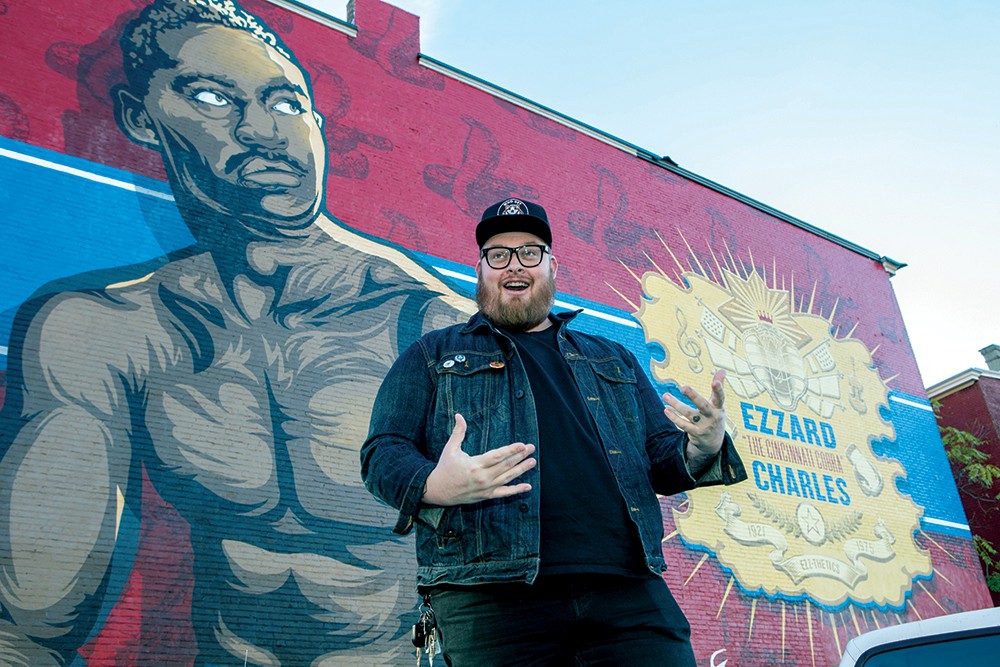
Jason Snell, DAAP '01, stands in front of his ArtWorks mural of Cincinnati boxer Ezzard Charles. ArtWorks was featured in the March 2017 issue of UC Magazine. Photo/Andrew Higley
Forgiven
I graduated in August 1967 with a master’s degree in supervision and administration. And I earned it by enduring racism expressed by staff and the dean. It was necessary to steel myself from the overt, racist comments by some of my professors. All these years, I’ve donated exactly $25 yearly, specified for the Darwin Turner Scholarship Fund. After reading the March 2017 issue of the magazine, I breathed a sigh of relief and finally allowed myself to forgive those who hurt me so long ago. I can now say, “Forgive them, Father, for they know not what they did.”
Odessa Walker Hooker, Ed ’67
Atlanta, Georgia
UC's work still getting attention

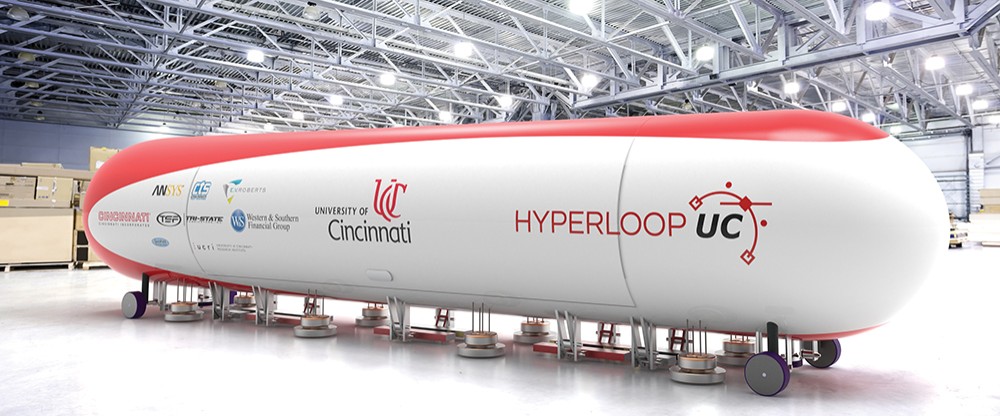
A team of UC student engineers created a prototype pod, depicted in this rendering, for high-speed transportation for the SpaceX Hyperloop competition.
Great story about the UC Hyperloop team. I liked it so much that I went online to read many of the stories. They were all very well researched and written. Congratulations to the engineering students for getting UC to back their project.
I worked with UC Engineering on another advanced transportation project about 20 years ago. It actually got publicity when we took our prototype on a tour of the state about 15 years ago. We had stories in all the major newspapers (Dayton, Columbus, Toledo and Cincinnati) and on the TV stations.
Jay Andress
Cincinnati, Ohio
The chance of a lifetime
Commemorating the start of the Raymond Walters era
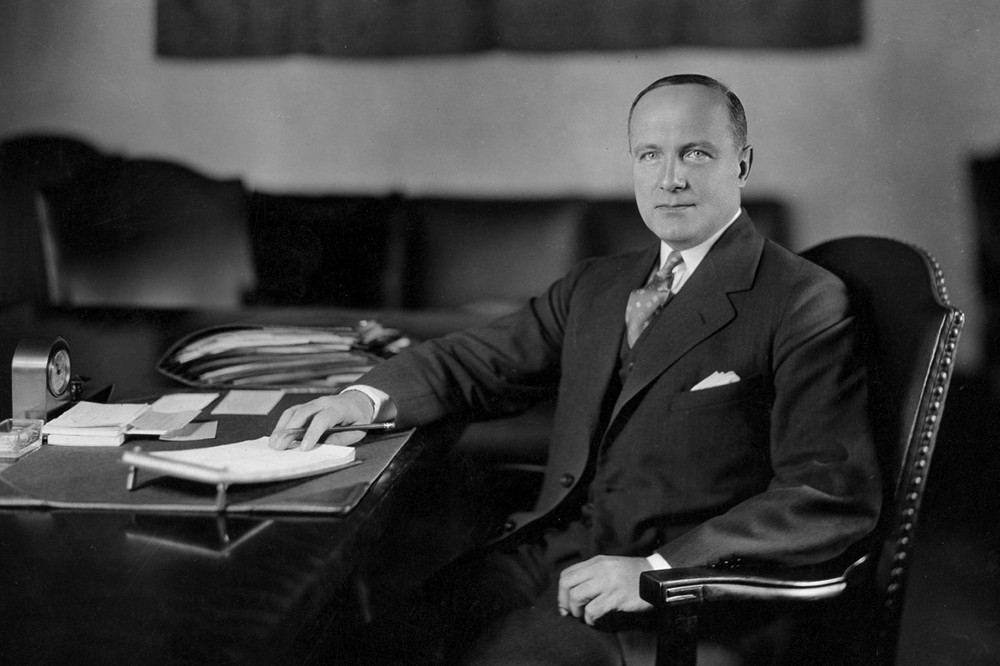
Raymond Walters
By Bob Miller
This September marks the 75th anniversary of the start of Raymond Walters’ role as president of the University of Cincinnati, a title he held from 1932 until his retirement in 1955, making him the longest-tenured president in UC’s history. Under his capable leadership, Walters helped navigate the university through the calamities of the Great Depression, World War II and the early years of the Cold War.
Before coming to UC, Walters, a native of Bethlehem, Pennsylvania, worked at Swarthmore College, a tiny Quaker liberal arts college near Philadelphia. For 11 years, he taught English, served as the college registrar, its dean of men and as the president’s right-hand man. In addition to his duties at Swarthmore, Walters traveled extensively to colleges and universities to rate their curricula and facilities for accreditation purposes. On those visits, he also collected data from school administrators. Walters became something of a statistics “wunderkind.” His published annual reports for the journal School and Society were eagerly awaited by university and college officials.
Meanwhile, then UC President Herman Schneider announced his decision to step down in 1932, giving its board of directors time to find a suitable replacement. While Walters had dismissed earlier opportunities to advance his career, he decided to accept UC’s invitation to come for an interview. At the time, UC was one of the largest municipal universities in the Midwest. Walters made two visits in late February and early March to get acquainted with his prospective employers. His first interview went well. On his return home the next day, Walters became consumed with doubts. He arranged to meet his boss, Swarthmore President Frank Aydelotte, at a Pittsburgh train station, in the latter’s sleeping car. Walters, out of loyalty, said he would turn down any offer if it came. The generous Aydelotte would not hear of it and told his protégé that if an offer did come, “it was the chance of a lifetime.”
One week later, a relieved and consoled Walters received a telegram from Frank Dinsmore, vice chairman of the UC Board of Directors. In all caps, the telegram conveyed to Walters that the board had voted unanimously in his favor. Walters completed his teaching and administrative duties at Swarthmore for the academic year.
On September 1, 1932, he began a new chapter of his life and career in Cincinnati. The challenges that he faced were many and substantive. The Great Depression had winnowed down the ranks of students who could afford tuition. Faculty faced either job losses or salary cuts. Schneider helped Walters make a smooth transition to his new duties. Over the next 23 years, the board never regretted its decision to hire Walters. Under his capable leadership, the university did not simply survive, it thrived.
Bob Miller teaches American history at the University of Cincinnati Clermont College. Miller is working on a biography of Raymond Walters.
FEATURES
UC grad helps fight stigma of mental illness by sharing her own journey from schizophrenia to recovery.
Sisters Lucy and Annette Braun, UC's trailblazing female PhDs, devoted their lives to illuminating nature.
At 150 years, CCM reflects on its humble beginnings and impressive firsts while celebrating successful alumni and campus events.
UC’s All-American thrower became the fifth national champion in Bearcats history.
UC’s Richard Harknett, one of the world’s leading online security experts, reveals the digital threats that keep him up at night.
UC President Neville Pinto is back home at the university that launched his career. His mission: to promote the value of higher education.



